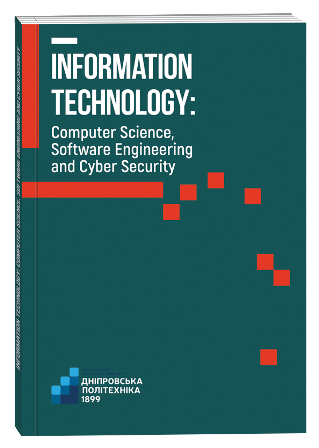APPLICATION OF CLOUD SERVICES FOR SYSTEM ADMINISTRATION OPTIMIZATION
DOI:
https://doi.org/10.32782/IT/2025-1-23Keywords:
cloud, cloud services, system administration, automation, architecture, security, IaaS, PaaS, SaaS, IaC.Abstract
This article analyzes the problems and challenges inherent in traditional system administration based on managing a local, physical IT infrastructure. These challenges include significant capital and operational expenditures related to the purchase of expensive server and networking equipment, its regular updates, energy consumption, cooling, and the rent or maintenance of server rooms. In addition to financial issues, the traditional approach is characterized by limited flexibility and scalability. Infrastructure expansion processes (e.g., adding computing power or data storage) are time-consuming, require careful planning, procurement, and physical installation, making it difficult to quickly respond to changing business needs or peak loads. Research Aim. The aim of this study is to analyze the key problems associated with the traditional system administration model based on physical IT infrastructure, and to justify the feasibility of implementing cloud technologies to address them. The focus is on improving the efficiency, scalability, and reliability of IT systems through the use of modern cloud services (IaaS, PaaS, SaaS) and automation methods. Scientific Novelty. The novelty of the work lies in the systematic analysis of the advantages of cloud services from the system administrator’s perspective. For the first time, practical aspects of the Infrastructure as Code (IaC) approach are generalized as an automation tool that significantly reduces the IT staff workload and minimizes the human factor. Special attention is given to the integration of monitoring, backup, and disaster recovery services within the cloud ecosystem. Research Methodology. The study applies comparative analysis methods of traditional and cloud-based approaches to IT infrastructure administration. It includes the generalization of practical cases of cloud solution implementation in various IT environments. Key performance indicators were evaluated, such as costs, infrastructure deployment time, maintenance complexity, scalability flexibility, reliability, and security. Conclusions. Cloud services demonstrate significant advantages over traditional system administration approaches in most key aspects. Their adoption allows for substantial reduction in operational costs, faster response to changing business needs, and high service availability. Automation through IaC contributes to process standardization, reduces the risk of errors, and increases IT department productivity. The implementation of cloud technologies is a relevant step for organizations seeking to modernize their infrastructure and enhance competitiveness in the digital era.
References
Azure architecture: autoscaling. Microsoft Learn December 16, 2022. URL: https://learn.microsoft.com/en-us/azure/architecture/ best-practices/auto-scaling (дата звернення 18.04.2025).
Azure Monitor Logs overview. Microsoft Learn April 1, 2025. URL: https://learn.microsoft.com/en-us/azure/azure-monitor/logs/data-platform-logs (дата звернення 18.04.2025).
Cloud Migration Services Market Trends. Cloud Migration Services Market Size, Industry Report, 2030. URL: https://www.grandviewresearch.com/ industry-analysis/cloud-migration-services-market-report (дата звернення 17.04.2025).
Cloud security comparison: AWS vs. Azure vs. GCP. ACG Technical Editors Team, June 08, 2023.
URL: https://www.pluralsight.com/resources/blog/cloud/cloud-security-comparison-aws-vs-azure-vsgcp?utm_source=chatgpt.com (дата звернення 17.04.2025).
Don Hall. Cost Savings & Benefits of Cloud Computing. URL: https://technologyadvice.com/blog/information-technology/4-ways-cloud-computing-can-save-money/ (дата звернення 17.04.2025).
GDPR vs. HIPAA: Similarities, Differences, and Tips for Achieving Compliance. URL: https://www.exabeam.com/explainers/gdpr-compliance/gdpr-vs-hipaa-similarities-differences-and-tips-forachieving-compliance/ (дата звернення 20.04.2025).
IaaS, SaaS та PaaS: що це таке, різниця та приклади. URL: https://blog.colobridge.net/uk/2022/08/iaas_saas_paas_ua/ (дата звернення 17.04.2025)
Achintha Bandaranaike. Infrastructure As Code on AWS With Terraform. URL: https://achinthabandaranaike.medium.com/infrastructure-as-code-on-aws-with-terraform-13ad11236b4d (дата звернення 19.04.2025).
.ISO/IEC 27017:2015(en). Information technology – Security techniques – Code of practice for information security controls based on ISO/IEC 27002 for cloud services. URL: https://www.iso.org/obp/ui/en/#iso:std:isoiec:27017:ed-1:v1:en (дата звернення 17.04.2025).
Lori Perri. Migrating to the Cloud: Why, How and What Makes Sense? URL: https://www.gartner.com/en/articles/migrating-to-the-cloud-why-how-and-what-makes-sense (дата звернення 17.04.2025).
.Fatih Nar, Tom Conklin. Cloud vs. on-premises datacenters: How to choose for your workload. URL: https://www.redhat.com/en/blog/cloud-vs-on-premises (дата звернення 18.04.2025).
The Complete Guide to Backup, Disaster Recovery and Business Continuity as a Service. URL: https://adp.assured-dp.com/guide-to-backup-and-disaster-recovery-as-a-service (дата звернення 18.04.2025).
Ethan Miller. The Role of DevOps in Cloud Computing Transformation. URL: https://www.invensislearning.com/blog/impact-cloud-computing-in-devops/ (дата звернення 17.04.2025).
What is Amazon CloudWatch Logs? Amazon Cloud Watch Logs: User Guide. URL: https://docs.aws.amazon.com/AmazonCloudWatch/latest/logs/WhatIs CloudWatchLogs.html (дата звернення 19.04.2025).
Невзоров А. В., Скляренко О. В., Колодінська Я. О., Ніколаєвський О. Ю. Моделі оцінки структурної живучості та надійності компʼютерних мереж. Міжнародний науково-технічний журнал «Вимірювальна та обчислювальна техніка в технологічних процесах». 2023. № 3. С. 164–169.







